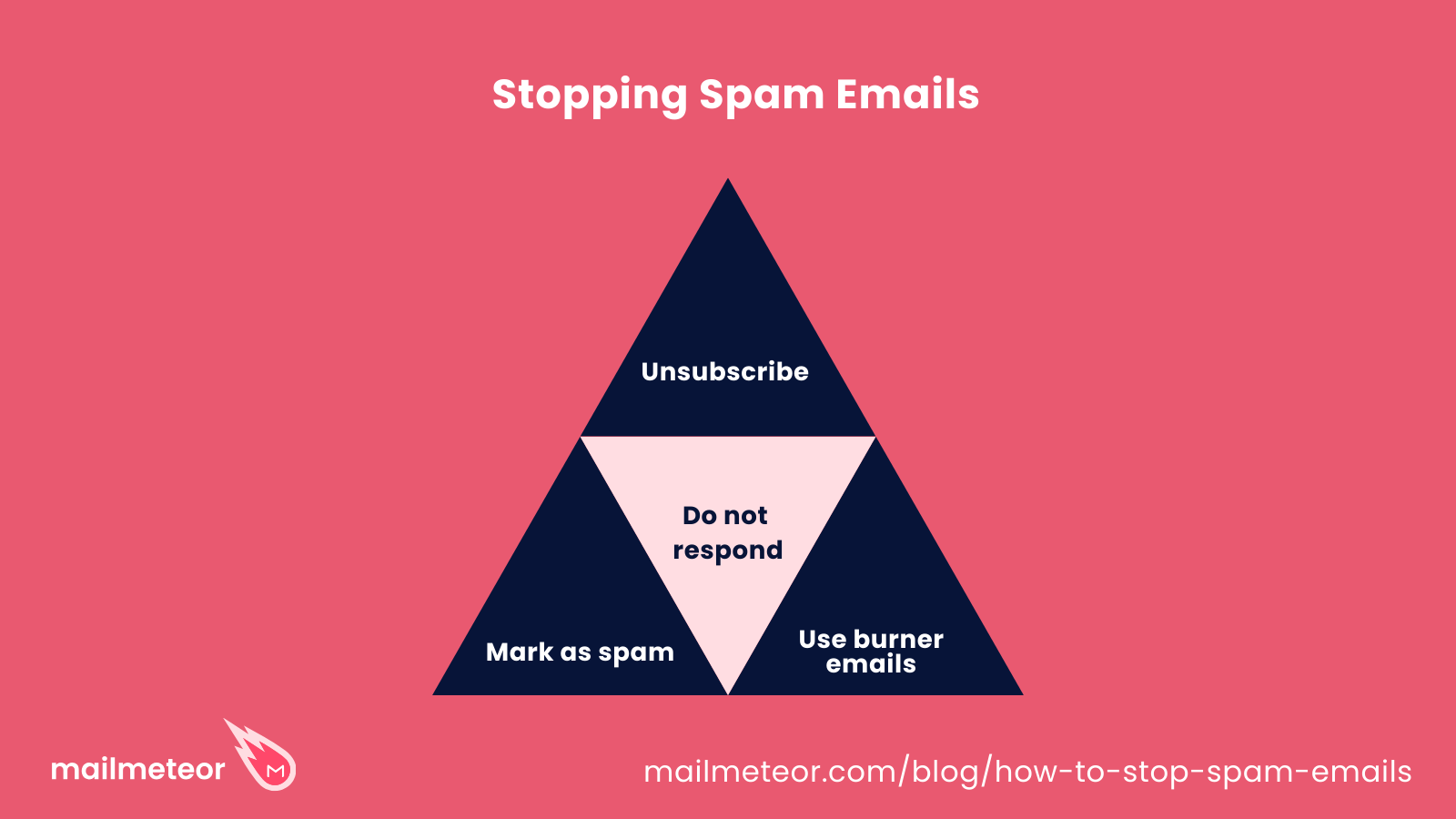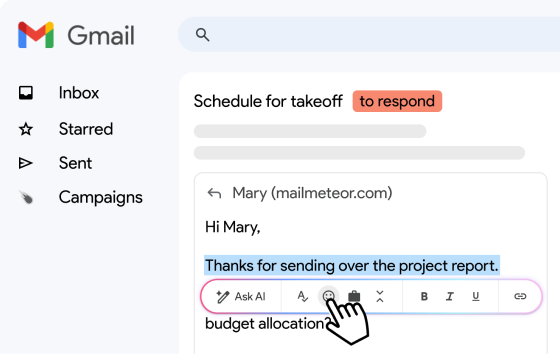Did you know that over 45% of all emails sent are spam?
Spam emails can seriously waste your time, pose a significant security risk, and clutter up your inbox for no reason.
These emails make it harder to find messages that truly matter, ultimately hurting your productivity in the process. Whether you are dealing with phishing attempts, shady scams, or simply an overwhelming number of unsolicited messages, these are solutions that you can employ to improve your experience. In this guide, we will dive into some strategies that will help stop spam emails in their tracks, protecting your privacy, organizing your inbox, and reclaiming your valuable time in the process.
We will cover:
Let’s begin,
What Qualifies as Spam?
Spam emails are unsolicited messages, often sent in bulk to a large number of recipients. Most of the time these are used for advertising but there are plenty with more nefarious purposes as well.
Phishing, spreading malware, and many other malicious messages also qualify as spam.
Does that mean all unsolicited emails are spam? No.
Whether something is spam can be a pretty subjective question depending on who you ask, as the label ranges from mere annoyances cluttering your inbox to serious security threats aimed at compromising your device and personal security.
Common Types of Spam
Understanding the various kinds of spam would be the first step in effectively combating such messages, since they come in many forms, each with their own intentions.
Here are some of the most common types:
- Advertisements: The most harmless type of spam, these are unsolicited emails promoting products, services, or websites. While they are not always malicious, they can be irritating and fill up your inbox quickly.
- Phishing Emails: These emails are hand-crafted to deceive recipients into revealing sensitive information such as usernames, passwords, or credit card details. These emails seem identical to legitimate organizations to appear trustworthy.
- Malware Spam: Email attachments are a relatively easy way to get sneak malware into a system, something that would otherwise require physical access. Such emails contain harmful attachments or links designed to infect your device with viruses, ransomware, or other malicious software.
- Scam Emails: Ever received an email claiming that you are an heir to a “Long Lost Inheritance”? These emails attempt to trick you into sending money or providing financial information under false pretenses, stuff like lottery wins or investment opportunities are also common.
The list does not end here, some scammers want you to sign up for an unwanted service, while others simply disguise themselves as another party to deceive you. Unsolicited personal emails can also be considered spam, so the list is vast and surely subjective.
Some parties do not mind receiving cold outreach emails, while others will obviously consider it to be nothing more than spam.
Stopping Spam Emails
By now you probably feel like dealing with spam emails is an endless battle, but there is no need to lose hope. With the right strategies in place, you will significantly reduce the clutter and protect yourself from potential threats.
Imagine cleaning up your inbox so much that every message you see serves a purpose, whether it is an important discussion from work, messages from friends and family, or newsletters you actually want to read.

Yes, you will need to take some proactive steps, but by doing so you will save countless hours, improve your emailing experience, while protecting yourself in the process.
Mark it as Spam
Whenever you receive an unwanted email, the first step is to mark it as spam or junk using your email service provider’s built-in tools.
Most email services, like Gmail, Outlook, and Apple Mail, have a simple button or option to report an email as spam. By doing this, you help your email client learn which messages you consider unwanted, improving the accuracy of spam filters over time.
- Marking emails as spam helps the system better recognize and block similar emails, it also helps the system identify spammers in the future.
- It hurts the sender’s reputation if enough people mark an email as spam, safeguarding the internet and making it a safer place; as a whole.
While doing so does have some benefits, it is still important to regularly check your spam folder to ensure that legitimate emails you care about have not been mistakenly filtered out.
Never Respond to Spam
One of the most crucial rules in dealing with spam is to never respond to such emails.
Engaging with spam messages, even just to unsubscribe, will confirm to spammers that your email address is active, potentially leading to even more unwanted messages in the future, the exact opposite of what you hoped to accomplish.
- Spammers use automated systems to send out emails, and any interaction can signal that your address is valid and worth targeting.
- Most unsubscribe links in spam emails do not work, they simply exist to verify if your mailbox is active or not – you are essentially subscribing to even more spam!
By avoiding any response to spam, you reduce the chance of your address being flagged for further spam. This approach helps keep your inbox cleaner and lowers the risk of falling victim to phishing scams or malware attacks.
Use Burner Emails
Email addresses do not cost anything to make – plenty of people use a secondary email address separate from their primary professional one as an effective way to manage and reduce spam.
- If you know that you will be using a service only once, it is wise to take this a step further and use a temporary or disposable address instead.
- Separating private and professional email addresses is also a decent idea if you routinely use email for both.
Both options will keep your main inbox free from clutter while significantly limiting the spam emails that you get. If a burner email starts receiving too much spam, you can simply abandon it without affecting your main account.
But managing multiple email addresses can become an annoying and tedious task by itself, you will need to keep track of all the services linked to each address to avoid missing important messages.
Unsubscribe, if possible
There is a possibility that the emails you consider spam, are actually just marketing emails sent by legitimate businesses. Reputable companies and organizations are required by law to provide a way to opt out of future emails, often found at the bottom of the email.
Using this unsubscribe link should significantly reduce the number of unwanted emails you receive from that particular sender.
Obviously, exercise caution and ensure that the email is from a legitimate sender before clicking any links, as some spam emails may use an unsubscribe link as a way to verify active email addresses – like we discussed above.
How Do Spammers Get Your Email?
By this time, you are wondering how you end up getting spam emails in the first place, well spammers tend to use a wide range of methods to create a mailing list. Here are three of the most common ones:
- Harvesting from the Web: Spammers use automated bots to scan websites, forums, social media platforms, and even online directories – they collect email addresses that are publicly available and add them to their list.
- Buying Email Lists: Plenty of spammers also purchase large databases of email addresses from not-so-decent companies and individuals who collect them via… let us say, dubious methods.
- Data Breaches: Companies do not need to be complicit for spammers to gain access to your data. Just search for recent data breaches and you will find some big names that should have been more careful with your personal information.
The folks over haveibeenpwned.com let you check if your email address is part of a data breach, big names like Facebook, Adobe, and Canva alone are responsible for hundreds of millions of leaked email addresses.


